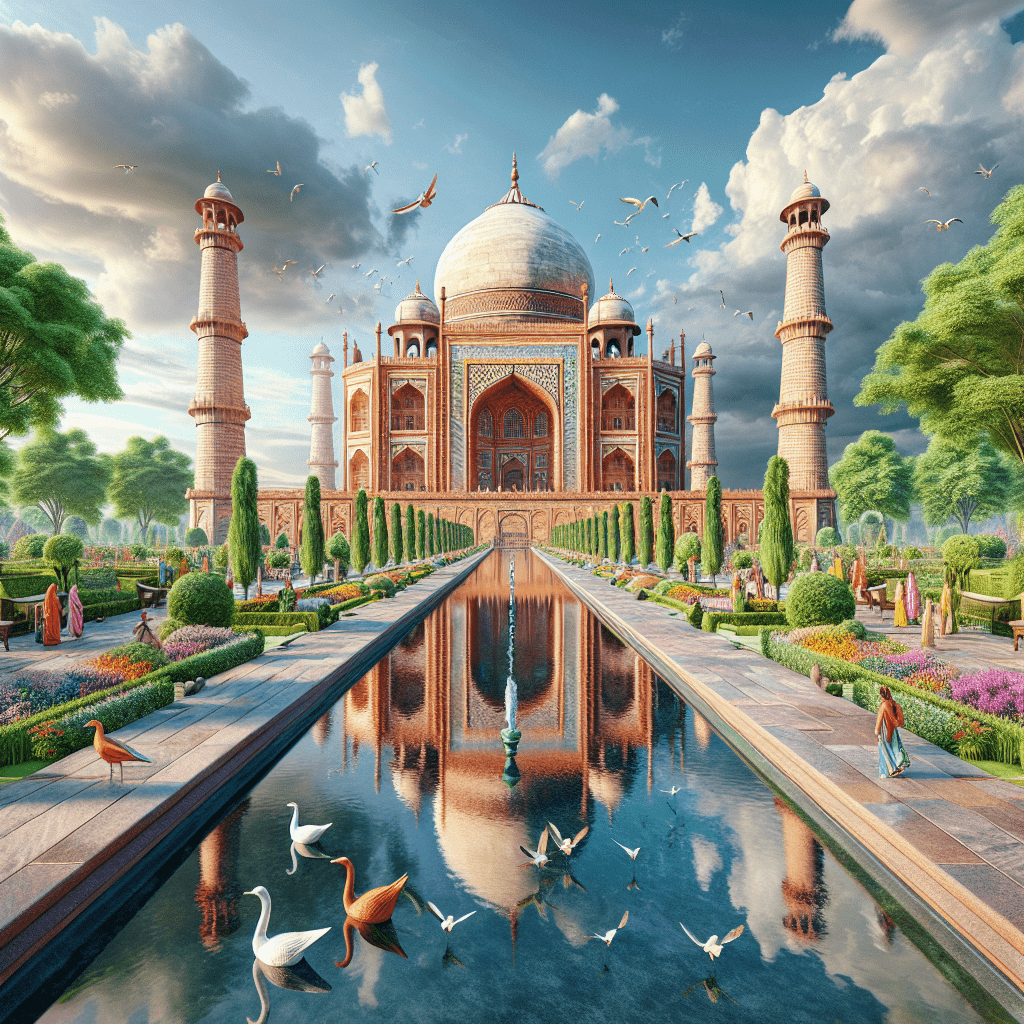The city of Agra, located on the banks of the Yamuna river in the northern state of Uttar Pradesh, India, is home to one of the most magnificent monuments ever created by mankind – the Taj Mahal. Known as the “wonder of the world in Agra, India,” this awe-inspiring mausoleum is a testament to love, art, and history, captivating the hearts and imaginations of millions of visitors from around the globe. In this article, we will delve into the enchanting world of the Taj Mahal, exploring its history, architecture, cultural significance, and the timeless allure that makes it a must-visit destination.
The Historical Significance of the Taj Mahal
The Taj Mahal’s story is intertwined with the history of the Mughal Empire in India. Commissioned in 1632 by the Mughal Emperor Shah Jahan, the mausoleum stands as a symbol of his profound love and sorrow following the death of his favorite wife, Mumtaz Mahal. This unparalleled monument took approximately 22 years to complete, with the combined efforts of over 20,000 artisans and craftsmen from across India and Central Asia, as well as expert calligraphers from Persia and skilled inlayers from southern India.
The architectural grandeur of the Taj Mahal
The wonder of the world in Agra, India, is not just a monument but an architectural masterpiece that perfectly embodies the zenith of Mughal art and architecture. The Taj Mahal is renowned for its symmetrical beauty, with the central dome flanked by four smaller domes and four slender minarets. The main structure is constructed with translucent white marble that reflects varying moods with the changing light of the day. The intricate pietra dura inlay work, featuring precious and semi-precious stones, creates mesmerizing floral patterns and calligraphic inscriptions, adding to the visual splendor of the monument.
The gardens of the Taj Mahal, known as the Charbagh, are a representation of paradise on Earth. The perfectly manicured gardens, with their geometrically arranged pathways and water channels, provide a serene and reflective approach to the mausoleum, leading visitors on a symbolic journey to the afterlife.
Cultural and Spiritual Significance
The Taj Mahal is not only a wonder of the world in Agra, India, but also a UNESCO World Heritage site, recognized for its universal value as a cultural treasure. It is a symbol of India’s rich heritage, reflecting the fusion of diverse architectural styles, including Persian, Islamic, and Indian. The monument’s spiritual significance lies in its purpose as a tomb, housing both Shah Jahan and Mumtaz Mahal, which serves as a reminder of the transient nature of life and the enduring power of love.
The Intangible Allure of the Taj Mahal
The allure of the Taj Mahal is not solely in its physical beauty but also in the intangible emotions it evokes in its beholders. The monument’s reflection in the Yamuna River, its silhouette against the backdrop of a crimson sunset, or the ethereal appearance under the soft glow of the moon, all contribute to the magical experience that has enthralled visitors for centuries. The Taj Mahal’s ability to convey beauty and emotion through its form and craftsmanship is what solidifies its status as a wonder of the world in Agra, India.
The Visitor Experience
Tourists from every corner of the globe flock to Agra to witness the splendor of the Taj Mahal. A visit to this wonder of the world is often the highlight of any trip to India. The experience begins at the grand entrance, the Darwaza-i-Rauza, which sets the stage for the breathtaking view of the Taj that lies beyond. As one walks through the ornate gateway, the Taj Mahal appears, slowly revealing its grandeur, a moment that is often described as spellbinding.
To fully appreciate the wonder of the world in Agra, India, visitors are encouraged to take their time exploring the site. Early morning hours offer a peaceful and less crowded environment, while evening visits showcase the monument’s beauty under the stars. Additionally, night viewings are available on certain days around the full moon, providing an unforgettable experience as the marble glows ethereally in the moonlight.
Conclusion
The Taj Mahal is more than just a monument; it is a profound expression of love etched in stone, a historical legacy, and an artistic marvel that transcends time. As a wonder of the world in Agra, India, it stands as a proud emblem of India’s multifaceted culture and history, inviting travelers from across the world to partake in its timeless beauty. Whether you are a history buff, an art enthusiast, a spiritual seeker, or simply a curious traveler, the Taj Mahal is a destination that promises an experience like no other. Its enduring allure is a testament to the fact that true beauty and love are indeed immortal.

